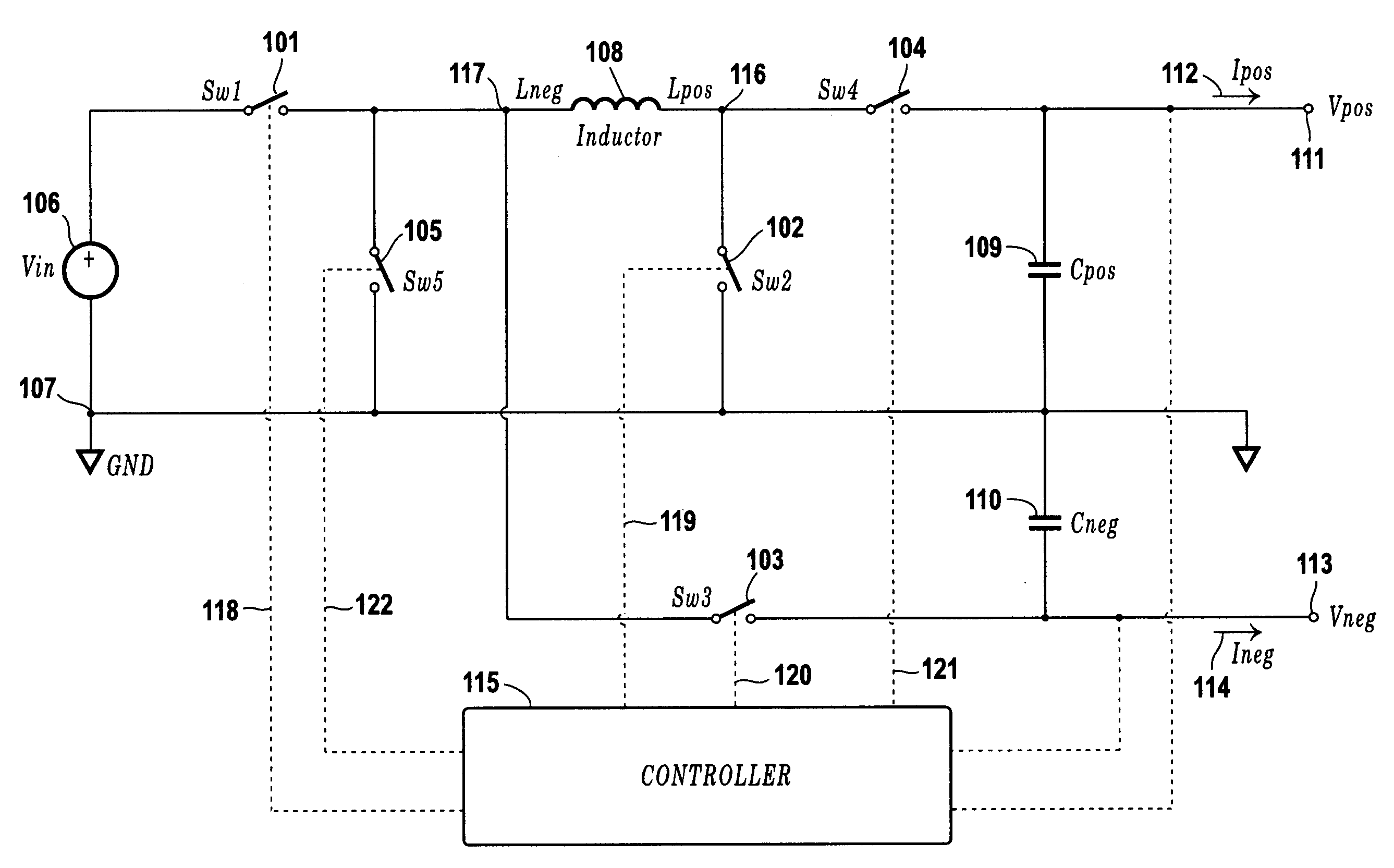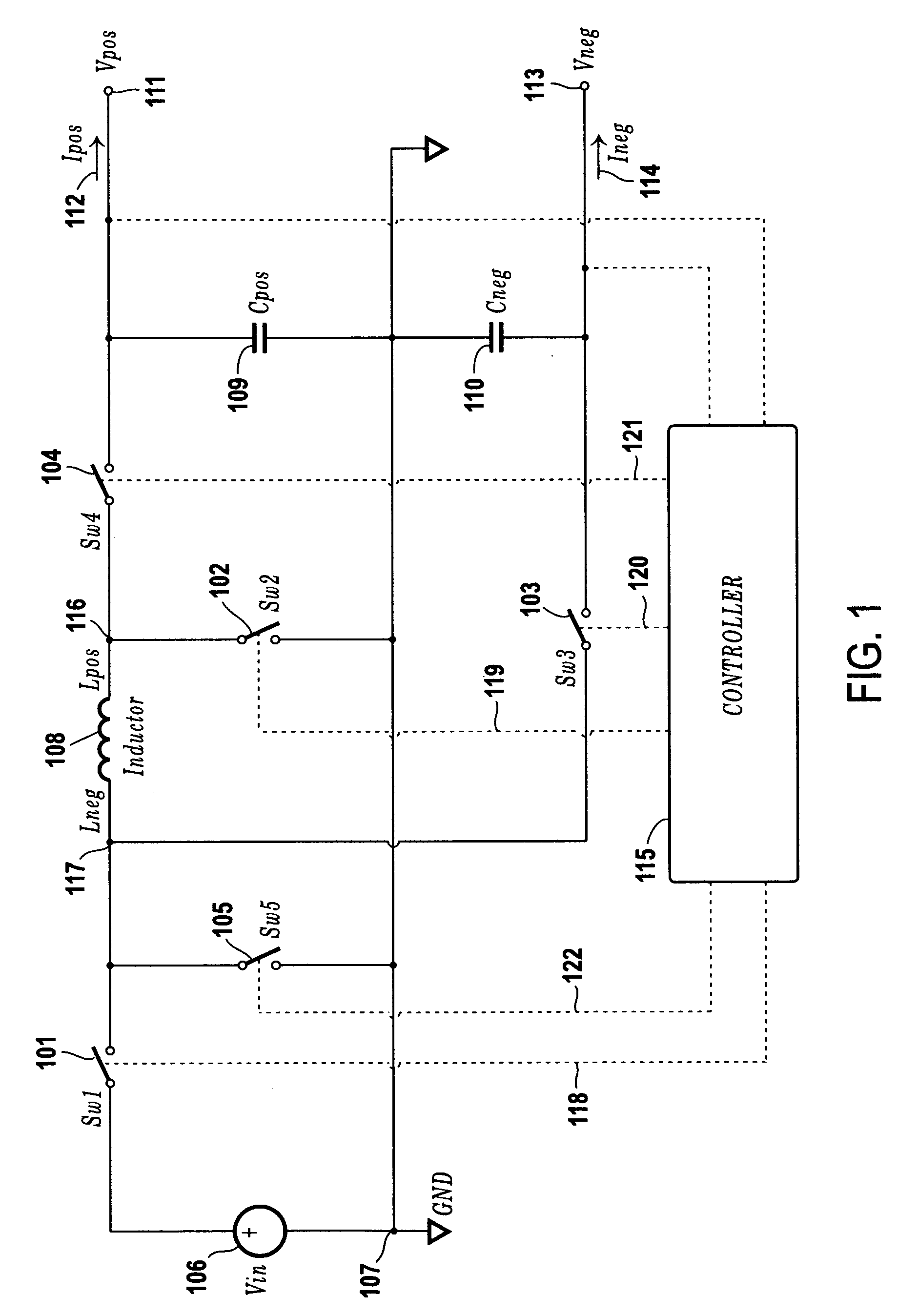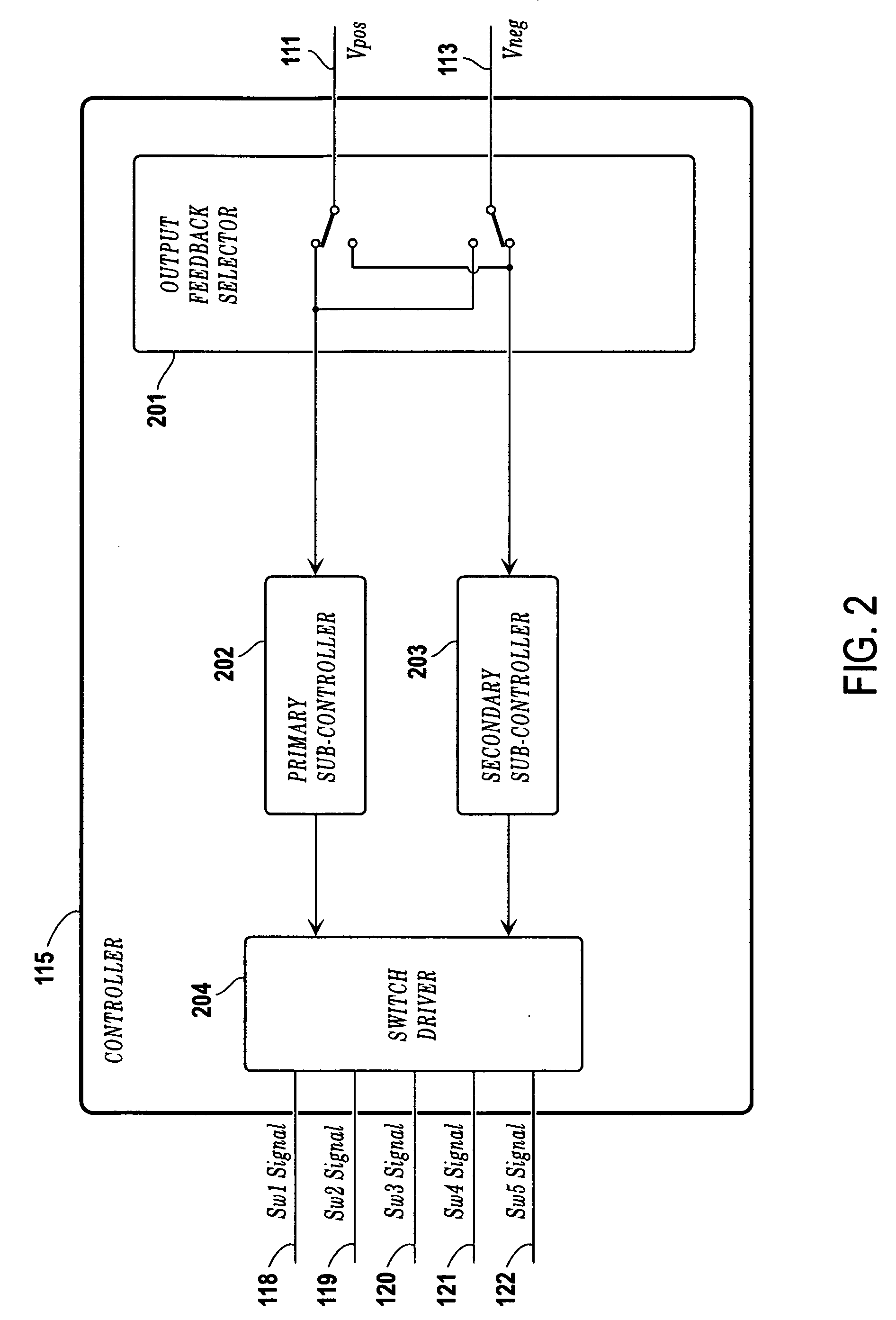Single-inductor buck-boost converter with positive and negative outputs
a single-inductor, buck-boost technology, applied in the direction of electric variable regulation, process and machine control, instruments, etc., can solve the problems of prior art four-switch power converters subject to constraints, power converters that do not provide buck-boost capability or bipolar voltage output capabilities, etc., to achieve the effect of reducing the ripple of output voltage and cos
- Summary
- Abstract
- Description
- Claims
- Application Information
AI Technical Summary
Benefits of technology
Problems solved by technology
Method used
Image
Examples
Embodiment Construction
[0014]Referring now to FIG. 1, there is shown a buck-boost SI-MO power converter circuit in accordance with the present invention that employs a single inductor and a five-switch bridge. The circuit utilizes a single source of supply voltage 106 to produce positive and negative output voltages at output terminals 111, 113, with respect to circuit ground terminal 107. An input switch 101 connects the supply voltage 106 to a first terminal 117 of an inductor 108. A switch 105 is connected between terminal 117 of inductor 108 and ground terminal 107. A switch 103 is connected between terminal 117 of inductor 108 and a negative output terminal 113. A switch 102 is connected between a second terminal 116 of inductor 108 and ground terminal 107. A switch 104 is connected between terminal 116 of inductor 108 and a positive output terminal 111. Switches 103, 104 may be replaced by conventional diode devices. A first capacitor 109 is connected between positive output terminal 111 and ground ...
PUM
 Login to View More
Login to View More Abstract
Description
Claims
Application Information
 Login to View More
Login to View More - R&D
- Intellectual Property
- Life Sciences
- Materials
- Tech Scout
- Unparalleled Data Quality
- Higher Quality Content
- 60% Fewer Hallucinations
Browse by: Latest US Patents, China's latest patents, Technical Efficacy Thesaurus, Application Domain, Technology Topic, Popular Technical Reports.
© 2025 PatSnap. All rights reserved.Legal|Privacy policy|Modern Slavery Act Transparency Statement|Sitemap|About US| Contact US: help@patsnap.com



